RAF Fighter Command VHF/DF Fixer Net Early 1950's
Kelvedon Hatch & Silverstead Fixer
Background
I originally wrote this piece for a researcher researching R.A.F. signals activities in the 1950’s. It records my impressions of life as a RT VHF/DF operator working in one of the Sector Operations Centre’s (Metropolitan Sector in my case) “VHF/DF Fixer Nets”. I was seconded to work at a “fixer” station near Biggin Hill. Between late 1953 and May 1955 I was in charge of this fixer (Silverstead VHF/DF Fixer) high on the North Downs five miles south of Biggin Hill. This was an element of Fighter Command’s Metropolitan Sector Operations Centre (MSOC) Fixer Network that plotted by VHF/DF triangulation the position of RAF and USAF jet fighters over Southern England.
R.A.F. Fighter Command VHF/DF Fixer Stations 1951 - 1955
According to papers in The National Archives at Kew (AIR10/7407 and SD747) in 1955 there were 67 VHF/DF Fixer stations in the UK established by the Royal Air Force, 44 in England, 15 in Scotland, 8 in Wales, plus IoM and Scillies.
These fixers were built around 1951 as part of the Rotor programme to modernise the United Kingdom’s radar defences. These stations operated under the command of a Sector Controller and provided directional finding equipment, enabling fighter aircraft crews to receive positional data by transmitting a voice (R/T) signal.
SD747 states: “In general these occupy from one-eighth to one-quarter of an acre of land. Fixers are fitted in wooden towers. The aerial system, type 61A, is fitted within the roof of the tower and no masts or aerials are external to the building. Equipment consists of two Receivers, R1392D, fed from O.E.S. (outside electrical supply) or camp supply. Standby power is obtained from 12-volt accumulators”. However, in the case of Silverstead Fixer, the station was “a wooden D/F tower located in a brick octagonal blast wall with a generator building a short distance away”, but it didn’t have a concealed aerial structure.
By February 1958 only 14 fixers remained as modern automatic DF Fixing was introduced and a couple of years later all were closed down.
ROTOR Programme Sector Operations Centres (Early 1950’s)
To control the overall air situation the United Kingdom, the UK established six Sector Operations Centres (SOC). These sites had no radar equipment, relying on information supplied from Radar stations, both in their sector and others. Four purpose-built SOCs were located at Barnton Quarry (Scottish); Skipton, (Northern); Bawburgh, (Eastern), and Kelvedon Hatch, (Metropolitan), whilst sites at Box, (Southern) and Longley Lane, (Western) reused existing structures. The new-build bunkers were designated R4 within the Rotor design framework. Central to the SOC was a three-storey operations room surrounded by segregated watch cabins, all with a view of a general map and tote board. On these a picture of the general situation and operational readiness of fighter squadrons would be displayed, aiding senior staff co-ordinating any response to an enemy incursion.
Arrival — 1953
In October 1953 I arrived home from my first overseas tour at 5 FTS, R.A.F. Thornhill, S. Rhodesia where I’d spent the past two-years as a VHF/DF operator.


From my Service Record
During my disembarkation leave I received a letter together with a rail warrant telling me my next posting was to be at “MSOC” and that I was to report to R.A.F. North Weald. Living in central London getting to North Weald was relatively easy: Central Line underground line to Epping, change there to the Central Line extension towards Ongar and get off at “North Weald Bassett”. This station was about 500-yards walk to the main guardroom. Reporting in at North Weald I was told North Weald would only cater for my accommodation and messing, I’d actually be working at MSOC Kelvedon Hatch. Totally mystified, because I’d never heard of the acronym MSOC or its location “Kelvedon Hatch”, I was allocated a bed in one of North Weald’s accommodation blocks and told to catch early the next morning one of the two R.A.F. buses that ran from North Weald with watch-keepers for MSOC Kelvedon Hatch, which I duly did.
After about a 10-12-mile journey the bus pulled up outside a chalet bungalow in Kelvedon Hatch where we all alighted, what was so odd was the incongruous sight of a couple of coaches from North Weald driving down a country lane at Kelvedon Hatch and disgorging sixty or so bods into a small chalet bungalow. What most people didn’t know was that the bungalow was just the entrance and guardroom to the MSOC bunker. Once past the guards a door led to a tunnel. The tunnel was the only way into the centre and was about 100 yards long. It led downwards and at the end of the tunnel one passed through a set of blast doors that gave access to the operations room and offices of this three-story bunker built deep in the Essex countryside.
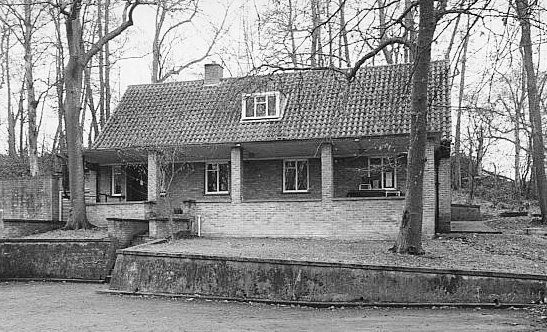
It was built in 1952 as the Sector Operations Centre for the Metropolitan Sector of RAF Fighter Command. Its construction involved the digging of a very deep hole; the three-story concrete bunker was built in the hole and when finished the removed soil was replaced on top so that the bunker was literally buried under 75-feet of Essex countryside. The whole process involved the removal and replacement of 40,000 tons of earth. It came with its own borehole (for water), generators and filtered air conditioning and supposedly would protect against a near miss by a 20 kT nuclear weapon.
Kelvedon Hatch later became the United Kingdom Nuclear Warning and Monitoring Organisation’s Metropolitan Sector HQ and later still became the regional Home Office bunker for London, known first as a Sub-Regional Control (1967), and subsequently as a Sub-Regional Headquarters (1973) and Regional Government Headquarters (1985).
In 1993 the bunker was sold to the farmer who owns the farm where it is located. He has opened it to the public as a cold war museum and tourist attraction. Details here:
RGHQ 5.1 | Kelvedon Hatch Secret Nuclear Bunker
MSOC — Kelvedon Hatch - Photos
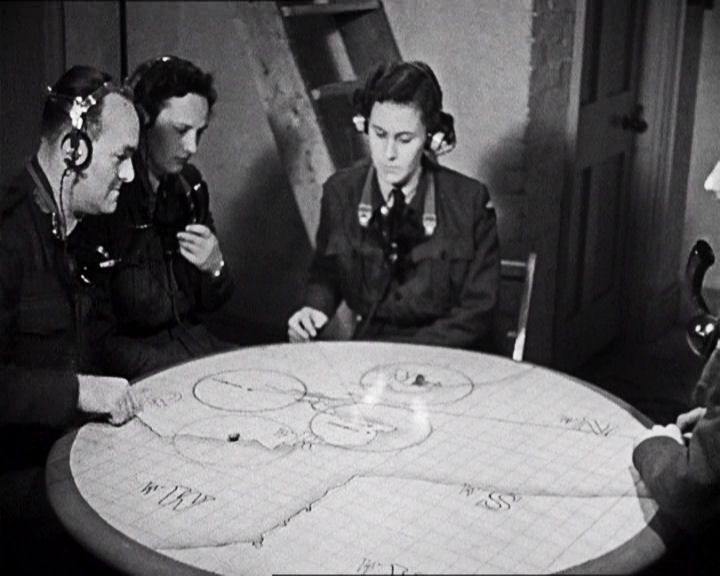
Fixer Plotting Table at the then Sector Operations Centre for SE England and the London area taken around 1950 – 1952 showing the fighter plotters, as I think they were called, about to “fix” an aircraft. Photo is not mine and was copied (photographed) by me from a magazine (Air Clues?) at around that time.
The photo clearly shows the four “fixers” marked on the fixer plotting table. From the bottom clockwise:
1. Pett Fixer high on the cliffs near Hastings
2. Silverstead near Biggin Hill where I worked
3. The one at the top right near the coast is Wix between Colchester and Harwich and finally
4. Monkton Fixer near R.A.F. Manston adjacent to the North Foreland.
Not visible is the site of the Whittlesford fixer near RAF Duxford in Cambridgeshire
The procedure was for an aircraft wanting to know its position to transmit by RT “‘WARMTOAST’ (the Sector Ops callsign) ‘Ivan 23’ (aircraft squadron callsign and aircraft number) ‘Request Fix”. Whilst the aircraft was transmitting the five fixer stations would swing their DF aerials, take a bearing on the transmission and pass the bearings obtained down the landline to the operators at the Sector Ops Fixer table. They in turn would pull out the cords from the fixer compass roses on the table in front of them aligning the cords with the bearing provided by the fixer. Where the cords intersected showed the position of the aircraft. The Fighter Controller watching this from the gallery would pass by radio to the aircraft the aircraft’s position either by grid reference or as a bearing and distance to a familiar reference point e.g. an airfield or town. They whole process would probably take no more than 30-seconds from the initial call by the aircraft asking for a fix to the aircraft being given a location.
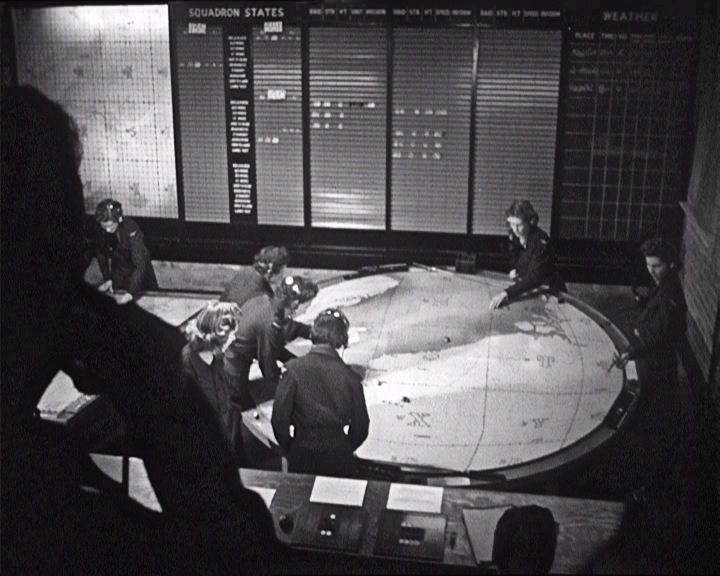
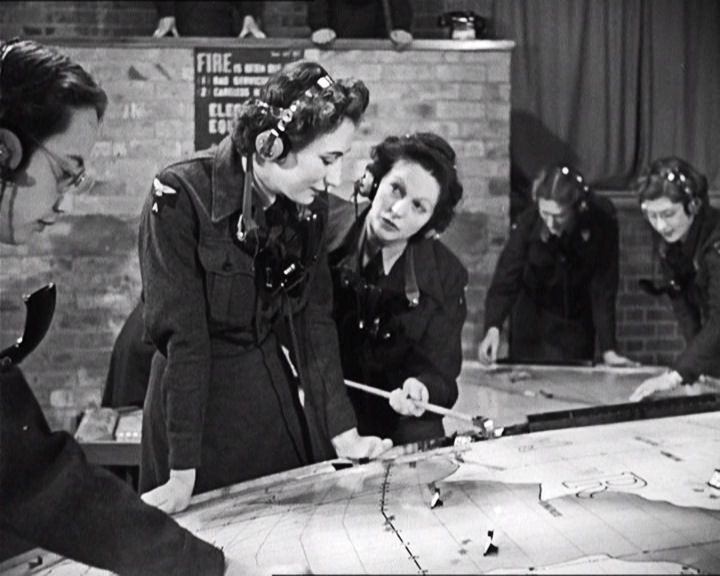

These photos pre-date my time at Silverstead and the inauguration around 1952 of the new Metropolitan Sector Operation Centre [MSOC] at Kelvedon Hatch near Ongar in Essex. MSOC had a more modern fixer plotting table than that shown in the photo. For the time I was in charge of the fixer at Silverstead i.e. between late 1953 and early 1956, there were five Fixers in our net:
1. Silverstead near Biggin Hill in Kent
2. Pett on the cliffs near Hastings
3. Monkton near RAF Manston in Kent
4. Whittlesford near RAF Duxford in Cambridgeshire
5. Wix fixer between Colchester and Harwich in Essex.
Not shown in the photo of the plotting table are the fixers in the “high” fixer net, “high” because they operated on two different VHF frequencies, 135.18 or 153.9 MHz, whereas the net I operated on was the “low” fixer net operating on a much lower VHF frequency of 112.86 MHz.
I suspect that VHF/DF fixer plotting pre 1952 was done at a Radar Station rather than at a sector operations centre as happened when the purpose-built sector operations centres were constructed.
I regret the quality is not too good, but the original negatives were lost in a 1970’s house move and I can only work from not particularly sharp small photos from my photo album.
"Pigeons to Point Able"
Another use of the Sector VHF/DF fixer service was to aid the recovery of aircraft to their home airfields. In the case of Biggin Hill-based aircraft the procedure was for the aircraft to call WARMTOAST as before, but this time the message would be to ask for “Pigeons to Point Able”. ‘Pigeons’ being the RT code for a course to steer to a location, and “Point Able” (for the MSOC controllers) being Chelmsford in Essex. Chelmsford was about 33-miles from Biggin and almost on an extended centre-line from Biggin Hill’s main runway. Having requested “Pigeons to Point Able” and received a fix from the VHF/DF “Fixers”, the MSOC controller would give the aircraft a course to steer to Chelmsford at the same time asking it to descend to 20,000 feet. A couple more fixes and steers to get the aircraft to Chelmsford and when overhead Chelmsford at 20,000 feet the aircraft would be instructed to steer a course to Biggin Hill and change frequency to the Biggin Hill Approach frequency to be guided down to a visual or Ground Controlled Approach (GCA) approach to the airfield.
Silverstead Fixer
Located five miles south of Biggin Hill off Grays Road in Silverstead Lane on the downs north of Westerham the Silverstead VHF/DF fixer was one of eight ‘fixers’ in two different nets used by the MSOC (Metropolitan Sector Operations Centre) of Fighter Command covering London and the South East of the UK.
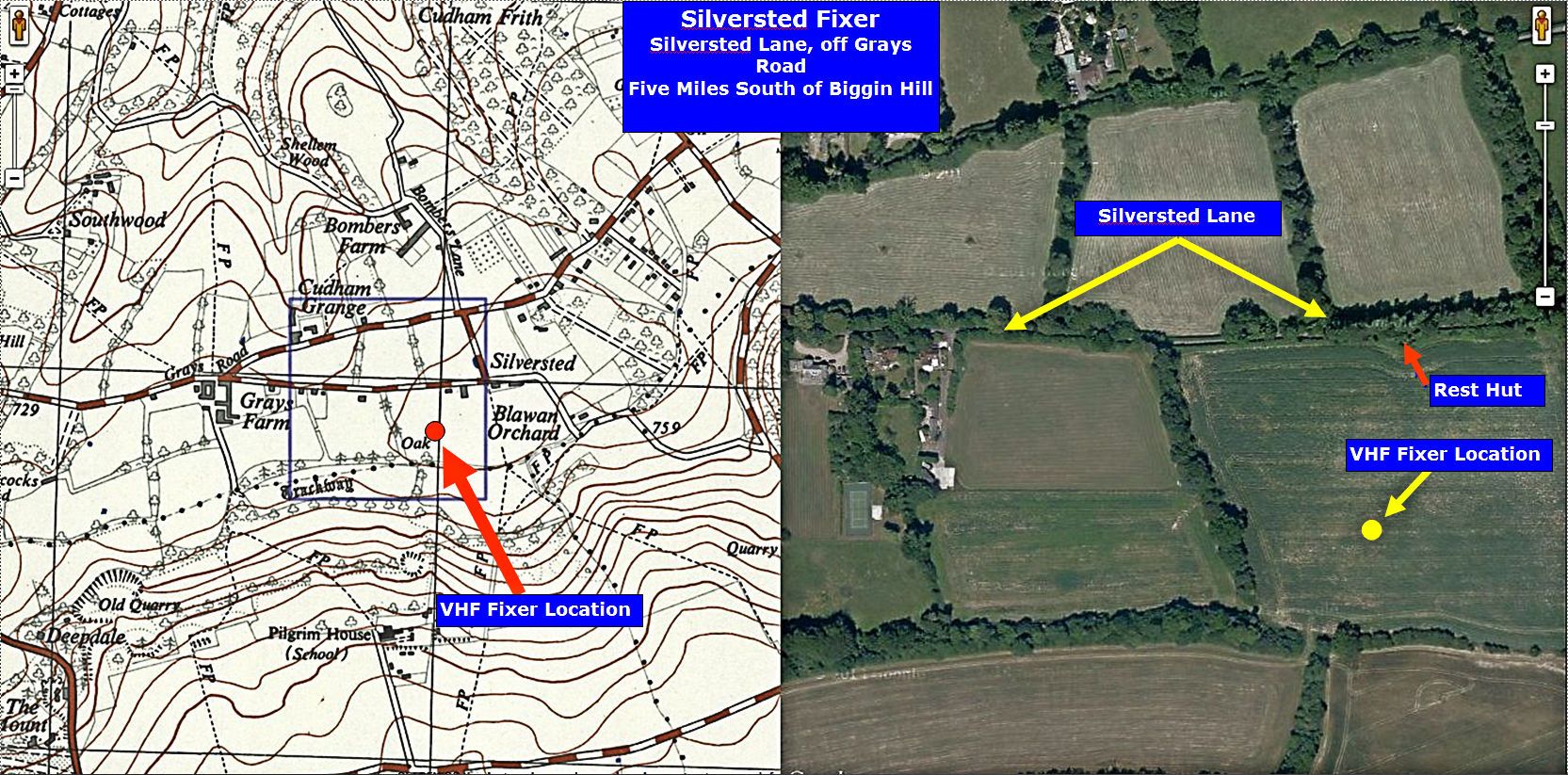
Where it was - with modern photo from Google Earth
Watch work was the norm. Day one was 08.30-13.00 and 18.00-22.30. Day two 13.00-18.00 and 22.30 to 08.30 next day. Depending on Fighter Command’s night flying program we were often stood-down early on the 18.00-22.30 watch and except when major exercises were flown, working after midnight on the final watch was most unusual. With four VHF/DF Operators on strength, at the conclusion of the final watch we then had two days off; with three operators we had only one day off before we started the watches all over again. Being accommodated and messed at R.A.F. Biggin Hill we had to fit in with Biggin Hill’s timetable for meals etc. Biggin Hill had one ‘regular’ squadron (41 Sqn) and two auxiliary squadrons Nos. 600 (City of London) and 615 (County of Surrey). The presence of two auxiliary squadrons meant that Biggin Hill normally flew from Wednesday to Sunday with Mondays and Tuesdays being days off in lieu of the weekend.
Working in the evenings had its benefits as we were entitled to “night flying rations”. These we collected from the cookhouse each evening before the early evening watch. The ration box invariably contained bread, eggs, bacon, butter, fruit and milk. Anything left over was used by the morning watch keepers.
Being “attached” had its benefits: No attendance at Station Parades, no station duties (orderly this, that or the other), in addition one was allowed to stay in bed as long as one liked pleading that one had come of night duty at Silverstead Fixer. Most ground staff knew we “fixers” were slightly “strange”, and if pushed we would claim that one needed a special security clearance to be told what we did. – and it worked!

Silverstead Fixer - View of the N Downs
Silverstead Fixer was located on an outstandingly scenic site high on the North Downs adjacent to the Pilgrims Way; the views from here were stunning. This view looks south-west into the valley with Westerham just about visible in the distance. This 1954 view is today spoilt by the presence of the Clacket Lane Motorway Services and the M25 Motorway which now runs left to right in the valley at the bottom of the photo between junctions 5 and 6.
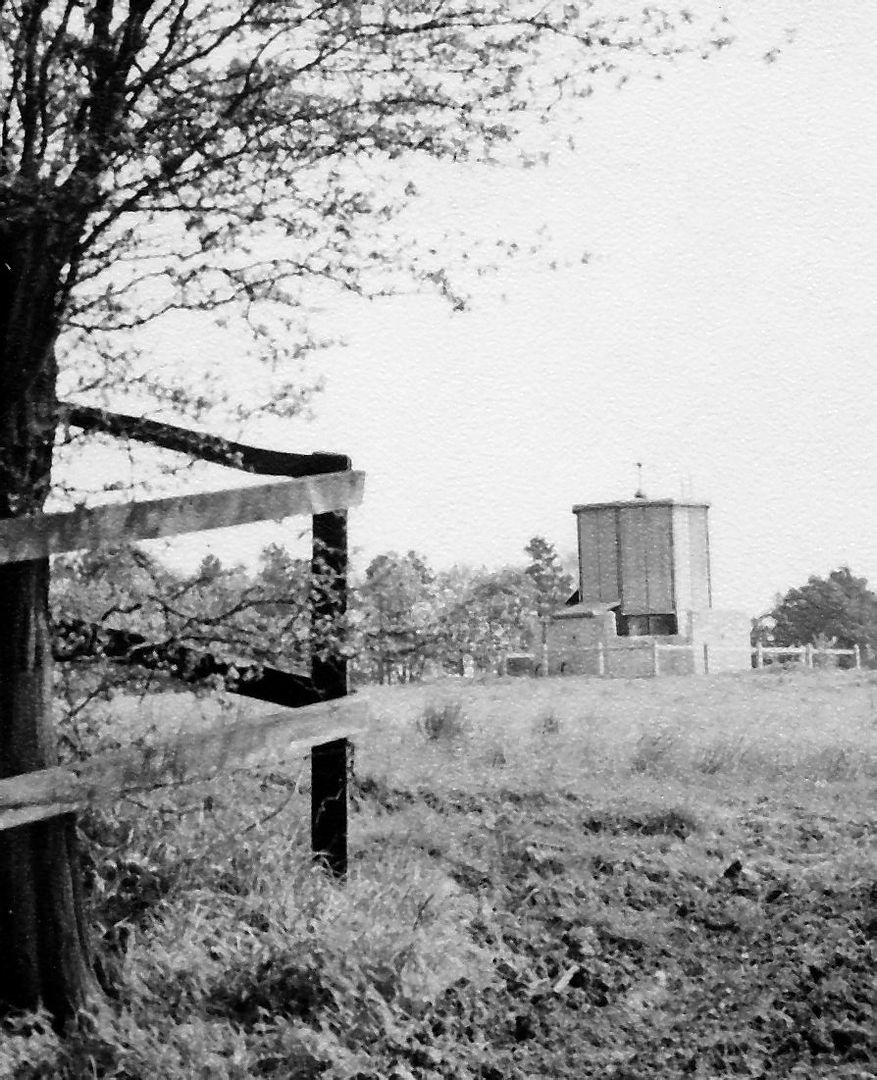

Watch out - cows about!

Very faded colour transparency from my early experiments with colour photography
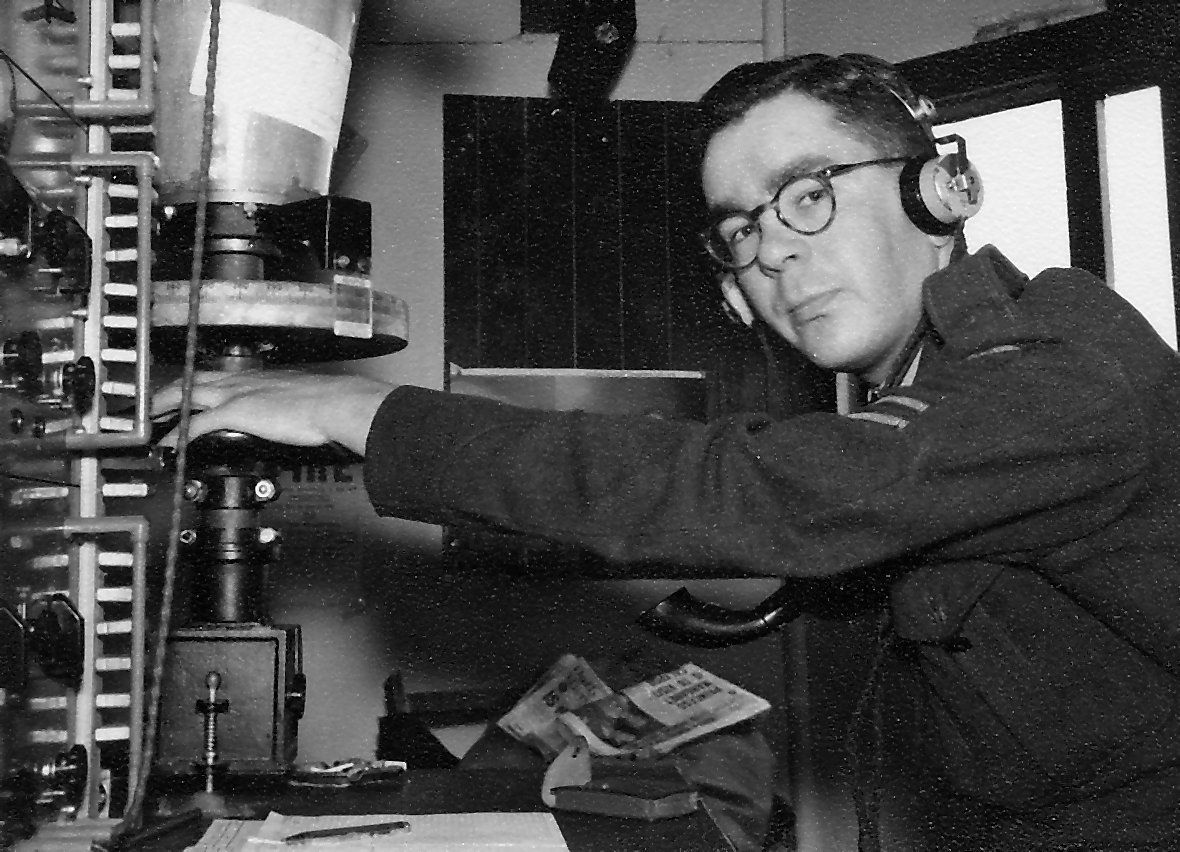
Silverstead Fixer - On the Job at the Wheel
Receivers were all crystal controlled as can be seen by the bank of crystals on the left. With the callsign WARMTOAST our usual frequency was 112.86 MHz, but occasionally we were asked by control at Met Sector HQ to change to 135.18 or 153.9 MHz on the high VHF net. Switching to these higher frequencies meant climbing on to the roof and swapping over the aerial rods to match the frequency being used - not nice on a cold and frosty or wet and windy dark winter night!

VHF/DF Aerial